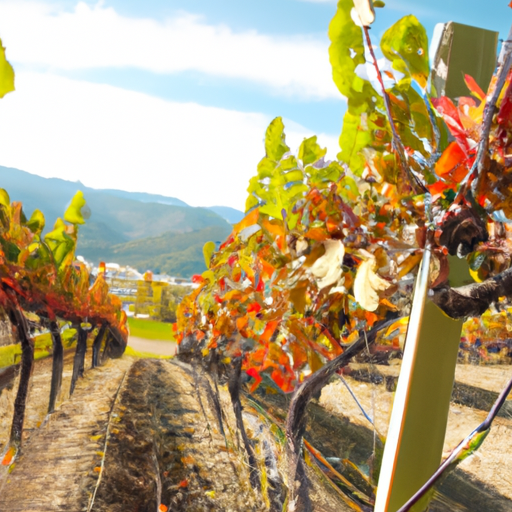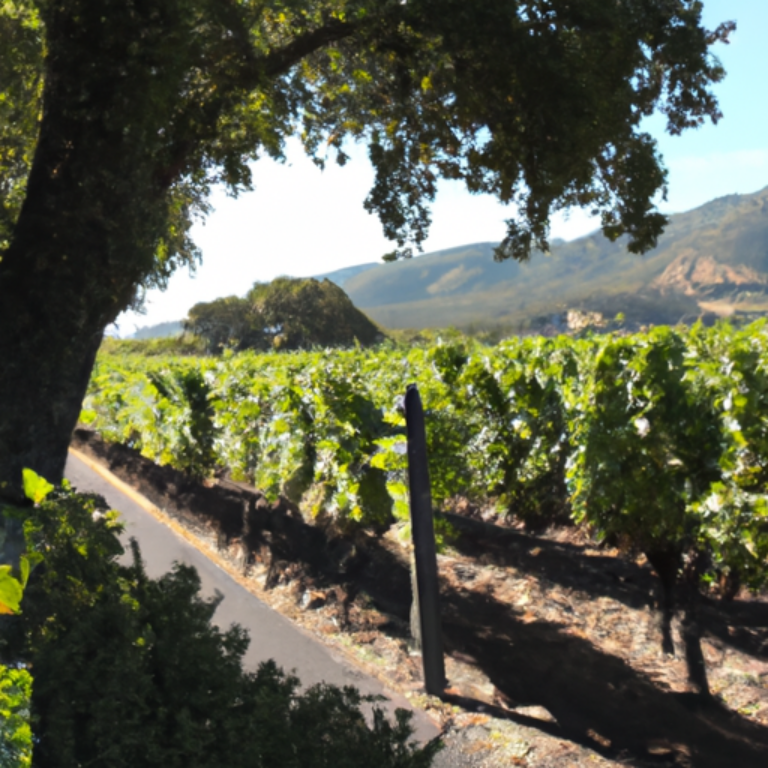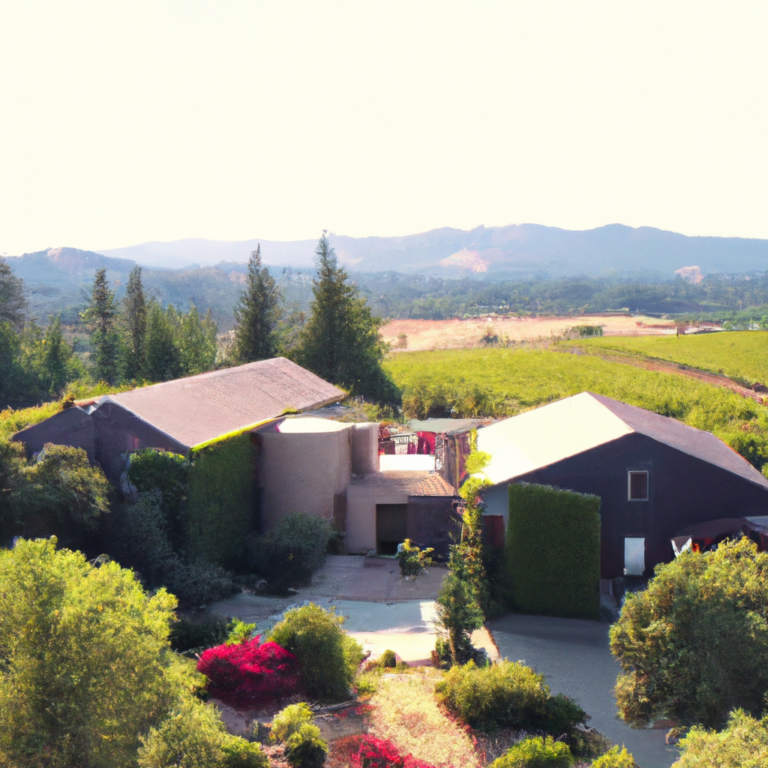A Fresh Start for Napa: Embracing a New Chapter
The Revitalization of Napa: Exploring the New Beginnings
A Fresh Start for Napa: Embracing a New Chapter
The Revitalization of Napa: Exploring the New Beginnings
Napa Valley, renowned for its picturesque vineyards and world-class wineries, is undergoing a remarkable transformation. The region, which has long been synonymous with wine production, is now embracing a new chapter of revitalization. This article will delve into the various aspects of this transformation, exploring the reasons behind it and the positive impact it is having on the community.
One of the key drivers of Napa’s revitalization is the increasing demand for experiential tourism. Visitors are no longer content with simply tasting wine; they want to immerse themselves in the entire winemaking process. As a result, wineries are expanding their offerings to include guided tours, hands-on workshops, and even opportunities to participate in grape harvesting. This shift has not only enhanced the visitor experience but has also created new job opportunities for locals.
In addition to experiential tourism, Napa is also witnessing a surge in culinary tourism. The region’s reputation for producing exceptional wines has naturally attracted talented chefs and restaurateurs. As a result, Napa now boasts a vibrant culinary scene, with a plethora of farm-to-table restaurants and gourmet food markets. This culinary renaissance has not only elevated the dining options for locals and visitors alike but has also provided a platform for local farmers and artisans to showcase their products.
Furthermore, Napa’s revitalization extends beyond tourism and gastronomy. The region is also experiencing a renaissance in the arts and culture scene. The opening of the Napa Valley Performing Arts Center has brought world-class performances to the area, attracting both local talent and internationally acclaimed artists. Additionally, the Napa Valley Museum has expanded its collection, showcasing the rich history and heritage of the region. These cultural developments have not only enriched the lives of residents but have also positioned Napa as a cultural destination.
Another significant aspect of Napa’s revitalization is its commitment to sustainability. Recognizing the importance of preserving the natural beauty of the region, wineries and businesses are adopting eco-friendly practices. From implementing solar energy systems to practicing organic farming, Napa is leading the way in sustainable viticulture. This commitment to sustainability not only ensures the preservation of the environment but also enhances the quality of the wines produced.
Moreover, Napa’s revitalization has had a profound impact on the local economy. The influx of tourists and the growth of businesses have resulted in increased job opportunities and economic growth. The region has seen a rise in entrepreneurship, with new wineries, restaurants, and boutique shops opening their doors. This economic boom has not only improved the standard of living for residents but has also attracted young professionals and families to settle in the area.
In conclusion, Napa Valley’s revitalization is a testament to the region’s ability to adapt and embrace change. The transformation from a wine-centric destination to a multifaceted cultural and culinary hub has breathed new life into the community. The focus on experiential tourism, culinary excellence, arts and culture, sustainability, and economic growth has created a fresh start for Napa, ensuring its continued success and prosperity for years to come.
Embracing Change: How Napa is Reinventing Itself

A Fresh Start for Napa: Embracing a New Chapter
Napa Valley, renowned for its picturesque vineyards and world-class wineries, is undergoing a transformation. The region, long associated with traditional winemaking practices and a focus on luxury tourism, is now embracing change and reinventing itself. This shift is driven by a desire to adapt to evolving consumer preferences, address environmental concerns, and remain competitive in a rapidly changing industry.
One of the key changes taking place in Napa is a shift towards sustainable and organic winemaking practices. Wineries are increasingly adopting environmentally friendly methods, such as using cover crops to prevent erosion and reduce the need for pesticides. This not only benefits the environment but also appeals to a growing number of consumers who are seeking out wines that are produced with minimal impact on the planet.
In addition to sustainable practices, Napa is also embracing innovation in winemaking. Wineries are experimenting with new grape varieties and techniques to create unique and exciting wines. This spirit of experimentation is attracting a younger generation of winemakers who are eager to push the boundaries and challenge traditional norms. By embracing innovation, Napa is able to stay ahead of the curve and cater to the changing tastes of consumers.
Another area where Napa is reinventing itself is in wine tourism. While the region has long been a popular destination for wine enthusiasts, there is a growing demand for more immersive and authentic experiences. Wineries are now offering visitors the opportunity to participate in grape harvesting, winemaking workshops, and even blending their own wines. This hands-on approach allows visitors to gain a deeper understanding and appreciation for the winemaking process, creating a more memorable and engaging experience.
Furthermore, Napa is also diversifying its offerings beyond wine. The region is now home to a thriving culinary scene, with world-class restaurants and farm-to-table dining experiences. This focus on food and wine pairing enhances the overall visitor experience and attracts a broader range of tourists who may not be solely interested in wine. By embracing the culinary arts, Napa is able to cater to a wider audience and position itself as a destination for food and wine lovers alike.
In order to support these changes, Napa is also investing in infrastructure and technology. The region is upgrading its transportation systems to improve accessibility and reduce congestion. Additionally, wineries are leveraging technology to enhance the visitor experience, with interactive tours and virtual tastings. These investments not only benefit tourists but also contribute to the overall sustainability and efficiency of the region.
Overall, Napa Valley is embracing a new chapter in its history. By embracing sustainable practices, innovation, and diversification, the region is able to adapt to changing consumer preferences and remain competitive in the global wine industry. This fresh start allows Napa to continue to captivate visitors with its natural beauty, world-class wines, and now, a more immersive and authentic experience. As Napa reinvents itself, it sets an example for other wine regions around the world, showing that change can be embraced and lead to a brighter future.
A Fresh Perspective: Discovering the Transformation of Napa
A Fresh Start for Napa: Embracing a New Chapter
Nestled in the heart of California’s wine country, Napa Valley has long been known for its picturesque vineyards and world-class wineries. However, in recent years, this idyllic region has undergone a remarkable transformation, embracing a new chapter that has brought fresh perspectives and exciting changes to the area.
One of the most significant shifts in Napa has been the growing emphasis on sustainability and organic farming practices. As consumers become more conscious of the environmental impact of their choices, winemakers in Napa have responded by adopting eco-friendly methods. From using cover crops to control erosion and promote biodiversity to implementing water conservation techniques, these vineyards are leading the way in sustainable agriculture.
This commitment to sustainability extends beyond the vineyards and into the wineries themselves. Many wineries in Napa have invested in renewable energy sources, such as solar panels, to power their operations. Additionally, efforts have been made to reduce waste and recycle materials, further minimizing the environmental footprint of the industry.
Another aspect of Napa’s fresh perspective is the increasing focus on diversity and inclusivity. Historically, the wine industry has been predominantly white and male-dominated. However, Napa is actively working to change this narrative. Women winemakers and winery owners are gaining recognition for their contributions, and initiatives are in place to support and promote diversity within the industry.
In addition to embracing sustainability and diversity, Napa is also evolving in terms of the types of wines being produced. While Napa is renowned for its Cabernet Sauvignon, winemakers are now experimenting with different grape varieties and styles. This experimentation has led to the emergence of unique and exciting wines that showcase the region’s versatility and creativity.
Furthermore, Napa is not just about wine anymore. The region has seen a surge in culinary tourism, with renowned chefs opening restaurants and food enthusiasts flocking to experience the vibrant food scene. From farm-to-table dining experiences to gourmet food and wine pairings, Napa has become a destination for food lovers as well.
As Napa continues to evolve, it is also embracing technology to enhance the visitor experience. Wineries are incorporating virtual reality and augmented reality into their tours, allowing visitors to immerse themselves in the winemaking process and learn about the history and culture of the region in a more interactive way.
The transformation of Napa is not without its challenges. The increasing popularity of the region has led to concerns about overcrowding and the preservation of its natural beauty. However, Napa is actively working to strike a balance between growth and sustainability, ensuring that future generations can continue to enjoy the beauty and charm of this iconic wine region.
In conclusion, Napa Valley is embracing a new chapter, marked by sustainability, diversity, innovation, and culinary excellence. The region’s commitment to eco-friendly practices, inclusivity, and experimentation has breathed new life into the wine industry, making Napa a destination that offers much more than just wine. As Napa continues to evolve, it remains a place of beauty, charm, and endless possibilities, ready to welcome visitors to experience its fresh perspective.







